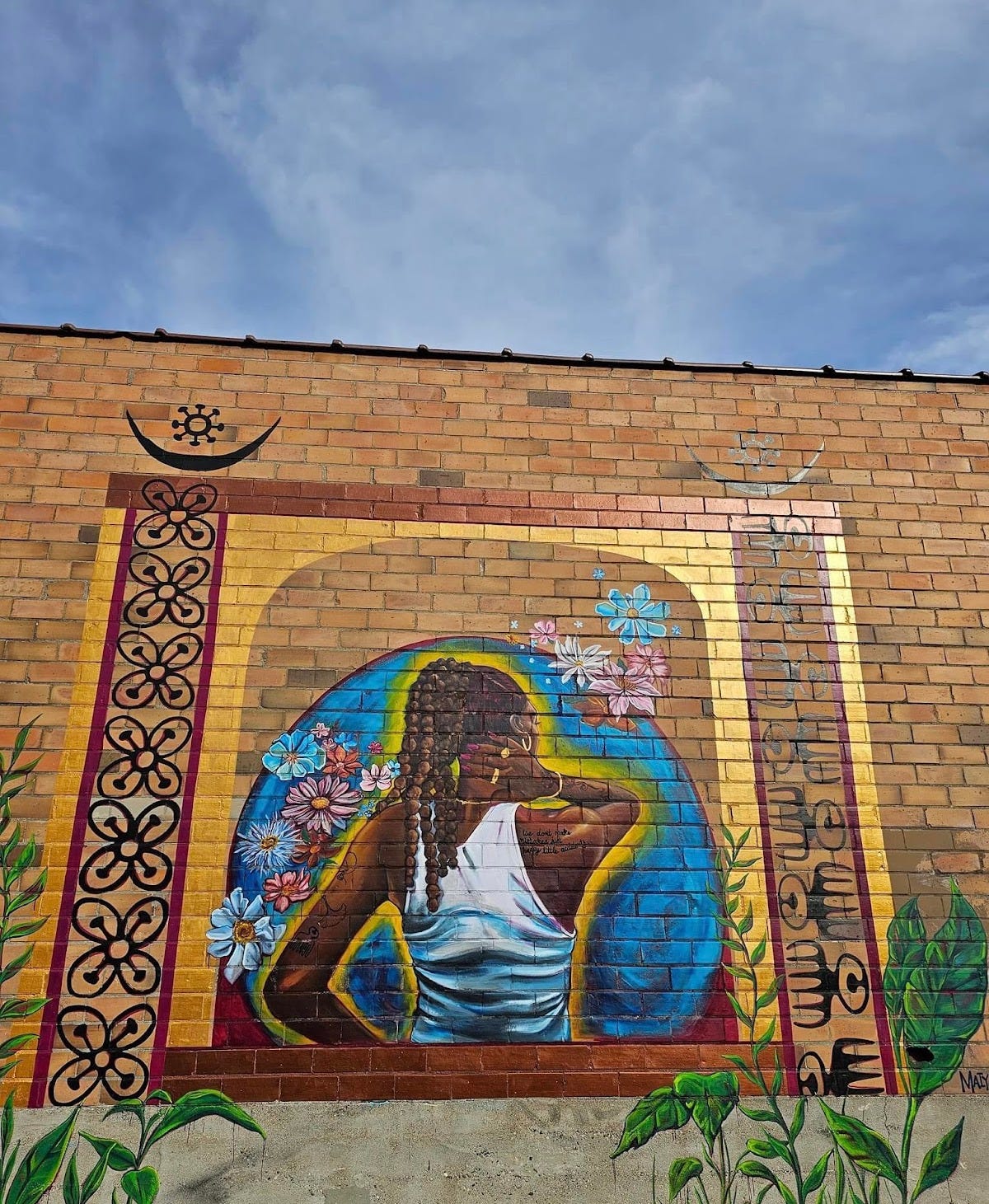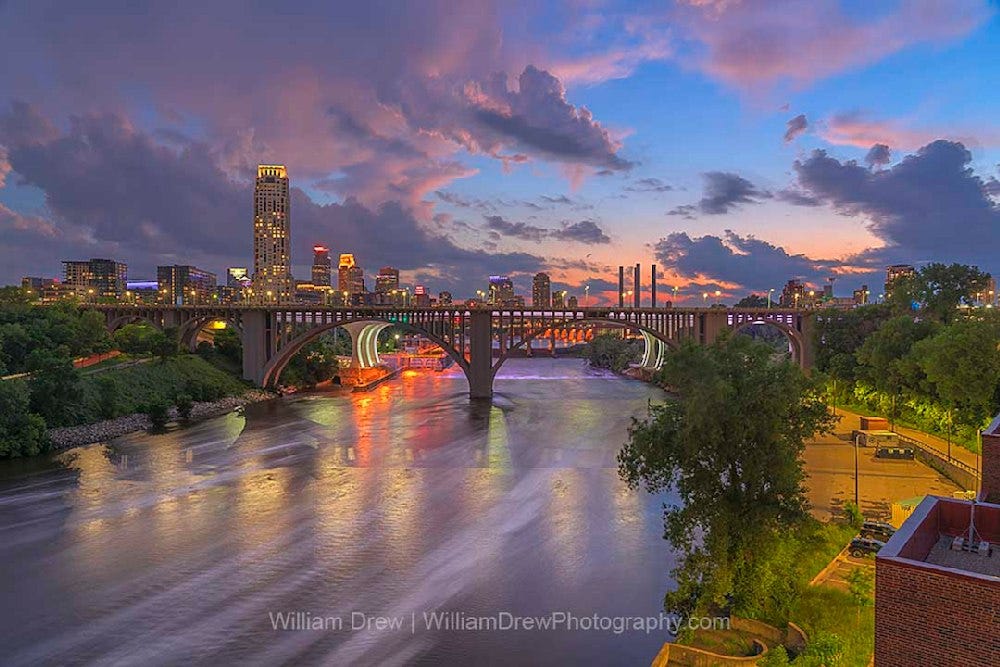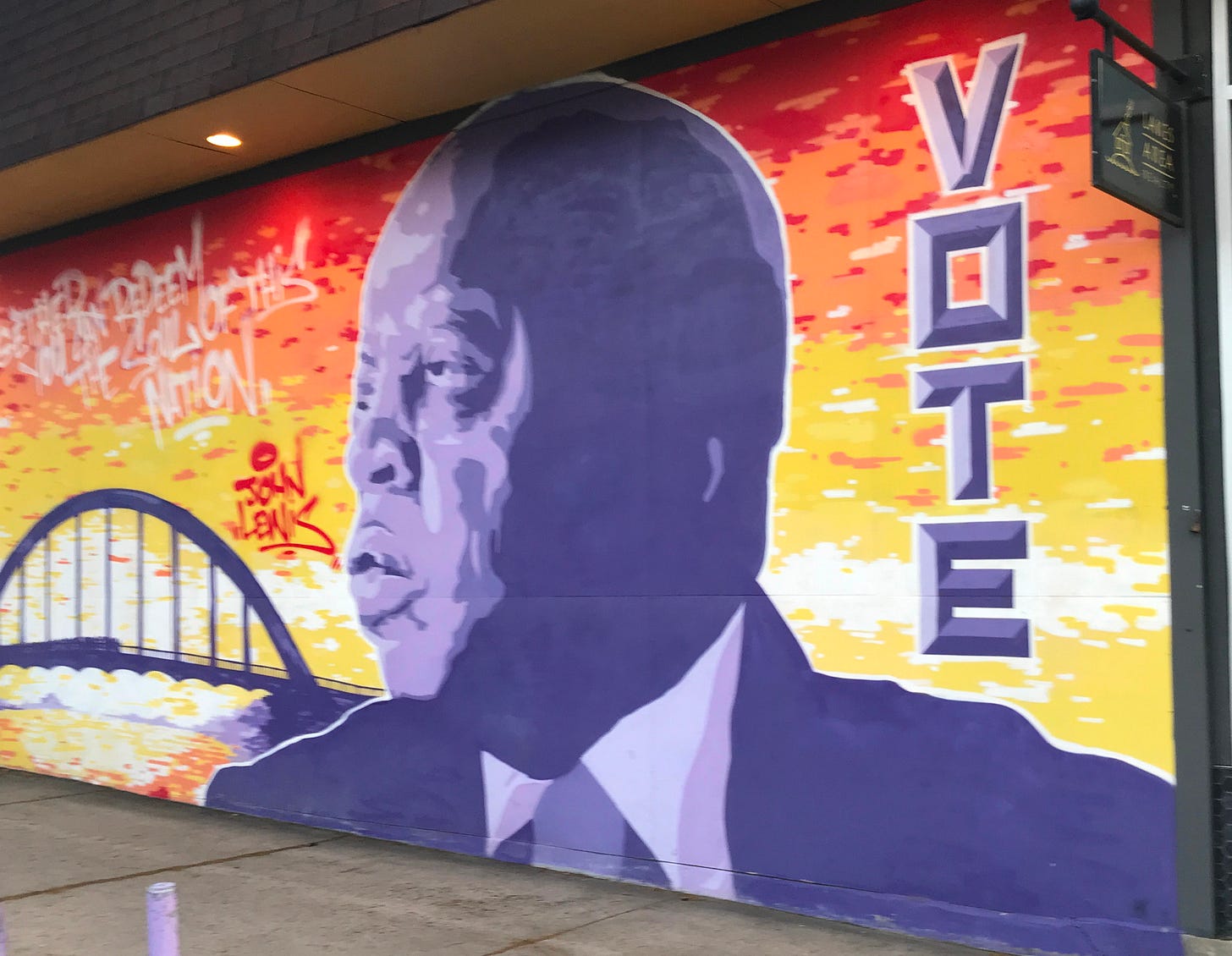Looking for the sacred in unlikely places
April 4, 2025
Last fall I had the opportunity to help organize and facilitate a retreat with about 15 people from around the country. We were a multi-cultural group in ministry among many different denominations. For a variety of reasons, I chose a retreat/conference center in the woods outside of Baltimore for the event. It was a lovely event, and the group experienced a vulnerability and trust that was both deeply moving and even a bit surprising. I remain enamored with the group and individuals in it.
And yet, a significant conversation arose as some of us drove back to the airport on the last day. An African American woman from South Carolina and a white, queer woman from Massachusetts both acknowledged that they don’t like doing retreats in the woods. Rather than being peaceful, they noted that remote areas can feel dangerous. They voiced their frustration that so many progressive people privilege wooded or distant places in their spirituality and their quest for wholeness. I appreciated their honesty and realized that for all kinds of historical reasons, their sentiments felt quite reasonable. Our backgrounds and experiences shape our spirituality in so many ways.
During this Lenten season I was re-introduced to a passage by Kathleen Norris, writing about her experience of the Great Plains of South Dakota and how they shaped her spirituality.
“The beauty of the Plains is like that of an icon; it does not give an inch to sentiment or romance. The flow of the land, with its odd twists and buttes, is like the flow of a Gregorian chant that rises and falls beyond melody, beyond reason or human expectation, but perfectly. Perhaps seeing the Plains is like seeing an icon: what seems stern and almost empty is merely open, a door into some simple and holy state.”
I am not deeply familiar with icons, I know the idea is that they can be a portal to the sacred. Traditionally they are sacred paintings, but Norris seems to use the word as a metaphor as well.
Her words reminded me that ‘icons’ are available to all of us as we seek to understand the sacredness of a place or a moment. 42 years of marriage to my North Dakota loving wife have helped understand Norris’ love of the Plains. And yet, as one who also loves urban spaces, I decided to adapt her writing to reflect my love of urban spaces as icons also.
A person is forced inward by the spareness of what is outward and visible throughout the urban city and its people. The beauty of the City is like that of an icon, it does not give an inch to sentiment or romance. The ebb and flow of the city , with all its odd twists and human constructions is like the flow of a Gregorian chant that rises and falls beyond melody; beyond reason or human expectation, but perfectly. Perhaps walking the streets of the city is like seeing an icon; what seems stern and often random and dirty is merely open, a door into some simple and holy state. (WB, March 2025)
I can, and do, experience many of the sights in my urban neighborhood as portals to the sacred. It may be a bridge across the Mississippi, a colorful mural on an old building, or even the sounds of buses driving in front of my house or planes flying overhead. Our connection with that which is most holy can, and does, happen anywhere.
The journey of faith includes both safety and discomfort, of course. Learning how we balance those is part of the journey. I appreciate when others are clear about what allows them to thrive. As we learn from each other, we realize the many and diverse ways we all piece together our own journey towards wholeness.
Shortly after moving back to Minneapolis, I picked up a small book called Afoot and Lighthearted: a Journal for Mindful Walking. Author Bonnie Smith Whitehouse offers dozens of invitations for how we might pay more attention as we walk in our own neighborhood. She invites observation on such things as borderlines, historical realities, or the “emotions, conditions, fashions and glories” in the areas where we live. She invites reflections on ourselves; how we connect, when we are bored, how what we see exposes us to things beyond the physical realm. She even has a chapter on transcendence, quoting Thich Nhat Hanh: “The miracle is not to walk on water. The miracle is to walk on the green earth in the present moment, to appreciate the peace and beauty that are available now.”
I am trying out this icon metaphor more in my life these days. How do the people, places and experiences of my everyday world open me up to transcendence? How do I open my spirit to even notice the possibility? Even more, how do I incorporate not only the mundane or boring elements of my city, but the difficult or troubling aspects of our current time into this practice? How might issues or social dynamics - the climate crisis, the political upheaval, the uncertainty of so many things - also be portals into something beautiful, profound or sacred?
Of course, transcendence is not something I experience daily. Just ask me as I shovel heavy spring snow, bake a less than stellar loaf of bread, or spend too many hours on Zoom. And yet, each of these things, and so much more, could be the icon I need for today. You’ll find me living on that continuum each day.
How might you experience your life differently if you saw everything as a potential icon - a door to some simple and holy state?





This touches me in a new way today! Yesterday I was looking at "street view" for the walking route from our hotel in Santa Fe (in about 10 days from now) to the Plaza, just 5-6 blocks. I was disheartened and uneasy, seeing that most of the route is unshaded sidewalks along unbroken high adobe walls. But now, now I can look at that with new eyes and consider it as an icon. Thank you.
Thanks for this Wint. I try to search for beauty in both urban and wild settings as portals to the sacred. I admit it is much easier for me in the wild and I acknowledge the privilege of safety that being a white male in remote places provides. That said, when I can tune myself in, I can find great beauty in architecture, in the lights of a city, of a flower growing in an unlikely place like the crack of a concrete sidewalk. Thanks for your invitation to join you in your musings of this blog.